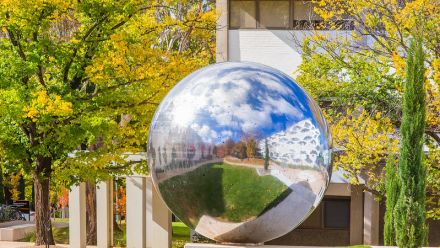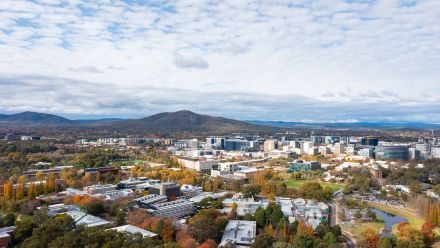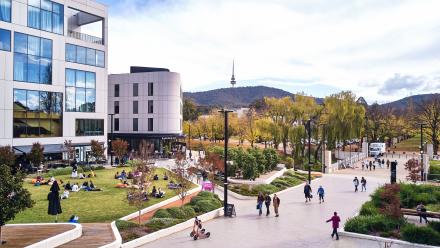Expanding our knowledge of the Universe
Then - Reaching for the stars
It was 8.30pm in Canberra when Professor Brian Schmidt received a phone call from Sweden.
Within a few moments, the academic from the ANU Research School of Astronomy and Astrophysics (RSAA) was talking to the entire Nobel Prize Committee and was told he, and his team, had won the 2011 Nobel Prize for Physics.
About eight minutes later, Schmidt was on a conference call with the world's media talking about how it felt to be a Nobel Prize winner - Australia's 12th and the sixth with ANU connections.
More than a decade earlier, Schmidt had led an international team of astronomers in discovering that the Universe's expansion rate is accelerating, not decelerating as previously thought. It was such a surprising discovery Schmidt took six weeks trying to nd the mistake, yet it was true. He shared the Nobel Prize with University of California's Saul Perlmutter and Adam Reiss.
While his discovery changed not only the world but our view of the Universe, Schmidt continued the astronomical research he loves at Mount Stromlo Observatory at ANU. He led the development of the state-of-the-art SkyMapper telescope, he has pushed the University's involvement in the Giant Magellan Telescope being built in Chile and he was at the heart of Stromlo's rebirth after the devastating 2003 bushfires.
In January 2016, he took up the position of ANU Vice-Chancellor but continues to supervise a PhD student and is active in astronomy research and science communication across the globe.
A global reputation for astronomy at ANU attracted Schmidt to Canberra in 1995, three years before his landmark discovery.
He notes the support from within RSAA for what he now describes as a "crazy experiment" that enabled the discovery to be possible.
The support for astronomy has been at the heart of ANU for decades, even preceding the formation of the University.
The Mount Stromlo Observatory was the dream of Professor Walter Duf eld, who wished to build a Commonwealth Observatory in Australia. It took more than 20 years of lobbying but the Observatory, along with the Director's Residence, was completed in 1928.
After the establishment of ANU, joint staff appointments at the University and Observatory were made and graduate studies undertaken until a formal amalgamation between the two took place in 1957.
A second observatory in the NSW Warrumbungle Mountains, Siding Spring, was built in the 1960s and this is now the site
of many telescopes, all operated remotely from Mount Stromlo.
RSAA now focuses on the study of the content, dynamics and evolution of galaxies, of the Universe as a whole, black hole phenomena and planetary science. It continues to reach for the stars, and beyond.
Now - The wave of the century
"It is a moment that will be remembered for a thousand years."
Scienti c discoveries don't come much bigger than the observation of a gravitational wave - ripples in spacetime caused by cataclysmic events in the Universe - so Professor David McClelland's excitement can easily be excused.
McClelland, Director of the ANU Centre for Gravitational Waves, led an Australian contingent of scientists who worked on experiments at the Laser Interferometer Gravitational-wave Observatory in the US.
"For the rst time, we've been able to observe a gravitational wave, created 1.3 billion years ago by the collision of two massive black holes," he says.
"It's the most violent event ever recorded.
"The amount of energy released in that event is 10 billion billion billion times greater than all the energy in the world's nuclear arsenals. It's huge."
The proving of the presence of gravitational waves in February 2016 came 100 years after Albert Einstein's General Theory of Relativity, in which he predicted their existence.
It opens up new elds of research in physics and astrophysics and McClelland says it will give scientists a new way to study the Universe, black holes, dark matter and energy.
One of those scientists is Professor Susan Scott, who studies General Relativity at the ANU Research School of Physics and Engineering. She believes the future of the sector's research is bright.
"We now have at our disposal a tool to probe much further back into the Universe than is possible with light, to its earliest epoch," she says.


